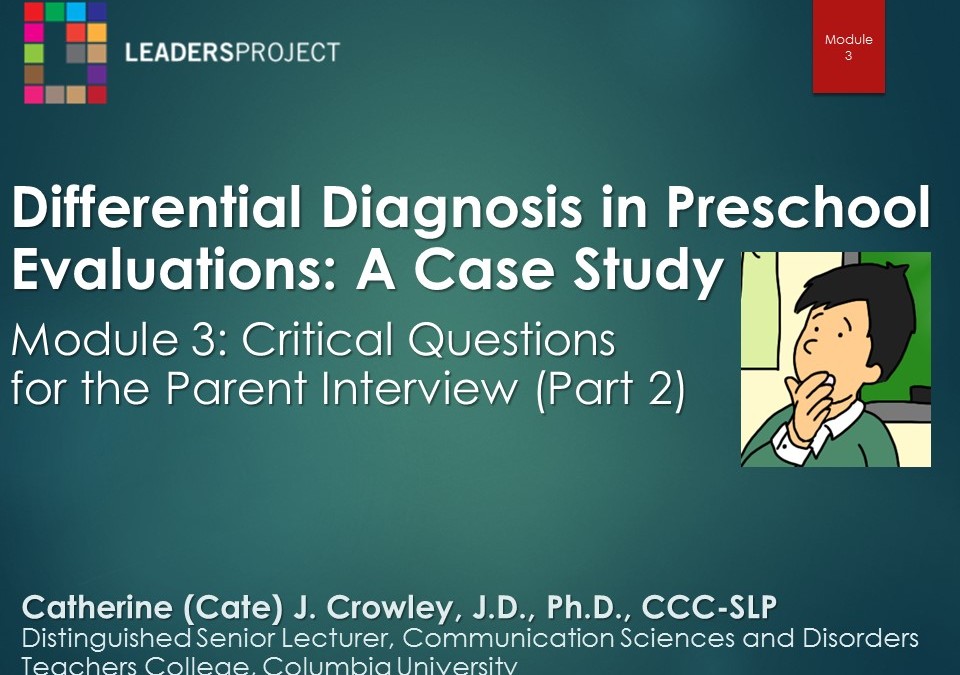riti
In this third video module, Cate continues on with the critical questions that need to be answered during the parent interview.
These next critical questions include developmental, speech and language milestones, any significant medical issues, and previous speech and language evaluations and therapy. Cate always includes her perception of the parent as a reliable informant, and estimates that around 90% of parents are reliable informants. Cate was also able to get information regarding how the child interacts with and compares to typically developing peers from a similar background. It is important to remember that a full audiological evaluation is mandatory for all children deemed to have speech and language delays. As in the previous module for the first part of parent interview, Cate indicates where relevant information should be in the evaluation.
Please find related materials here:
Model Eval: 2;10-English/Spanish- Verbal Apraxia
Model Eval: 2;10- Verbal Apraxia IEP Goals
Critical Questions in Spanish Document
Current Research on Non-Speech Oral Motor Exercises
Find the playlist for the full set of videos in this module series here:
Differential Diagnosis in Preschool Evaluations: A Case Study (DDPE Playlist)
Find each of the modules from this playlist here:
Module 1: Why an Accurate Differential Diagnosis Matters
Module 2: Critical Questions for the Parent Interview Part 1
Module 3: Critical Questions for the Parent Interview Part 2
Module 4: Academic Language Expressive and Receptive Language
Module 5: Receptive Language Comprehension and Following Directions
Module 6: Eliciting Quality Narratives in Expressive Language
Module 7: Motor Speech, Articulation, and Speech Sound Inventory
Module 8: Dynamic Assessment: Nonword Repetition, Syllable and Sentence Repetition
Module 9: Putting it All Together in the Written Evaluation Report
Module 10: Developing Appropriate Goals for the IEP
Find research mentioned in this module here:
Christensen, M., & Hanson, M. (1981). An investigation of the efficacy of oral myofunctional therapy as a precursor to articulation therapy for pre-first grade children. Journal of Speech and Hearing Disorders, 46, 100-167. http://jshd.pubs.asha.org/article.aspx?articleid=1774894
Lass, N. J., & Pannbacker, M. (2008). The application of evidence-based practice to nonspeech oral motor treatments. Language, Speech, and Hearing Services in Schools, 39, 408-421. http://lshss.pubs.asha.org/article.aspx?articleid=1778842
Ruscello, D. M. (2008). Nonspeech oral motor treatment issues related to children with developmental speech sound disorders. Language, Speech, and Hearing Services in Schools, 39, 380-391. http://lshss.pubs.asha.org/article.aspx?articleid=1778840


![[feed link]](/wp-content/plugins/rss-just-better/rss-cube.gif)